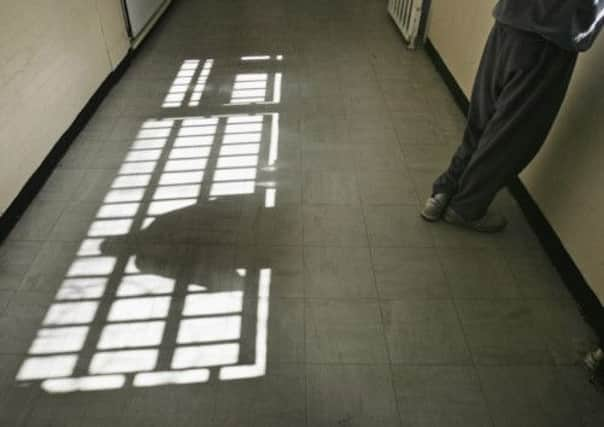Stuart Waiton: Touchy-feely justice


If passed, the Victims and Witnesses (Scotland) Bill, will make it a statutory duty to allow victims of crime the right to a face-to-face apology from offenders. The potential cost of this restorative process could be significant, but it is, for some, seen as a price worth paying for what is understood to be one of the new, enlightened ways forward for the criminal justice system.
Some people balk at the idea of restorative justice, seeing it as a soft option. Having studied the rise of restorative justice, I think there are grounds for scepticism but not because it is a “soft option”.
Advertisement
Hide AdAdvertisement
Hide AdThe first point to note about the rise of restorative justice is that this process of victims meeting the offender and receiving an apology is not something that has been fought for by victims. There are no campaigns or marches taking place with protesters screaming: “What do we want? An apology! When do we want it? Now!” The drive for a more victim-centred form of justice has come from the top down, from within the criminal justice system, also from professional advocates, and perhaps most significantly, from politicians themselves. Indeed the drive towards victim-based politics kicked off in the UK with John Major’s Conservative government creating the first Victims’ Charter in 1990, and was accelerated in the Criminal Justice System with the New Labour Party’s elevation of fighting “crime and the causes of crime” in the mid-1990s.
While the rise of victim-based justice is often seen as a reflection of a more liberal and caring justice system, it is worth recalling that the first politicians to “stand up for victims of crime” were right-wing Republicans in America in the late 1960s. This was a time when the criminal justice system in the US was fast losing its legitimacy, not only among oppositional radicals but also amongst the so-called “silent majority”. A Dirty Harry approach was needed. “Clear the streets and lock up the bums,” was the cry from the Right who fast become advocates of victims of crime.
In the UK, a similar process emerged in the 1980s. Again, the criminal justice system was losing its legitimacy. The rehabilitative dream of the welfare system lost supporters and again, as in the US, the justice system, especially the police, was seen as a reactionary force – as “Thatcher’s Boot Boys”.
It was this problem of legitimacy and a vengeful right-wing reaction to crime problems that first elevated the victim as a central figure in the justice process. In the 1990s, however, “standing up for victims” was turned into a radical concern as ex-socialists and feminists abandoned their dreams of changing society to themselves become advocates of victims and what newly became defined as vulnerable groups.
At a philosophical level what we were witnessing was the abandonment on the Right of a belief in morality (and moral rehabilitation) and of politics on the Left (and of a social approach to crime and justice). Moral and political arguments were now replaced by an avalanche of law-making and new policing initiative, and the historical relationship between (active) citizens and the state was replaced by a growing scramble to stand up for and advocate on behalf of all of us as (passive) vulnerable potential victims.
The result is that the caricatured traumatised victim of crime has become the crutch upon which the criminal justice system, and indeed politics itself, has attempted to re-legitimise itself. Restorative justice is one of the practical outcomes of this process.
Represented as a “communal” approach to justice, this restorative approach should in reality be understood as an asocial and therapeutic elevation of the emotional individual victim in society: With the criminal justice system increasingly judging its success not in relation to justice but in the “healing process” it believes it can create.
Tragically, this elevation of the victim runs the risk of undermining justice itself, as the subjective emotional reaction of victims increasingly replaces the objective basis of assessing crime and punishment.
Advertisement
Hide AdAdvertisement
Hide AdJust as importantly, the demand to put victims at the centre of this process runs the risk of actually constructing victimhood, of labelling people and encouraging us all to understand ourselves not as individuals who simply had an unpleasant experience, but as victims of crime who must be increasingly involved (as victims) in the entire justice process.
Ironically, the touchy-feely aspect of restorative justice is seen as an alternative to the supposedly authoritarian operation of the old system. However, it should in reality be seen as a new and worrying extension of state and professional power into the emotional lives of us all. Restorative justice is in essence a form of emotional management.
The offender must play to a script – especially if (as is being suggested in Scotland) the apology takes place before sentencing. If I were an offender, I’d be down on my knees in a flash, weeping and hollering about how sorry I was. But equally, it is rare for the restorative justice process to be allowed unless the victim is himself prepared to play the game, to follow the pre-prepared script, and to forgive the offender.
What we are ultimately witnessing is a degradation of the justice system and an elevation of a new form of authoritarianism – the emotional management of both offenders and victims. The outcome will not be the healing of communities but the undermining of a rational liberal and objectively-based justice system.
• Stuart Waiton is a lecturer in sociology and criminology at Abertay University